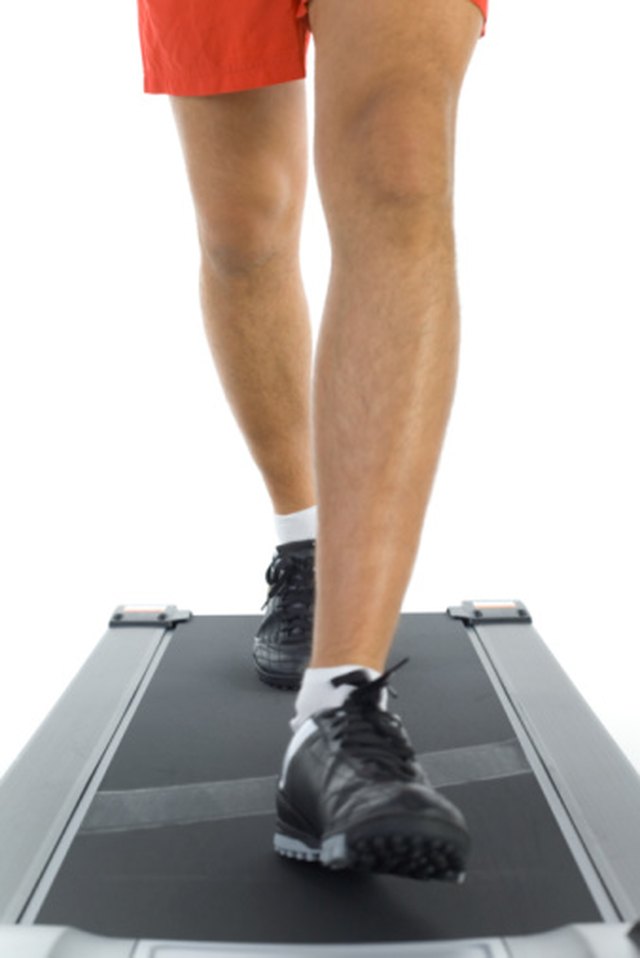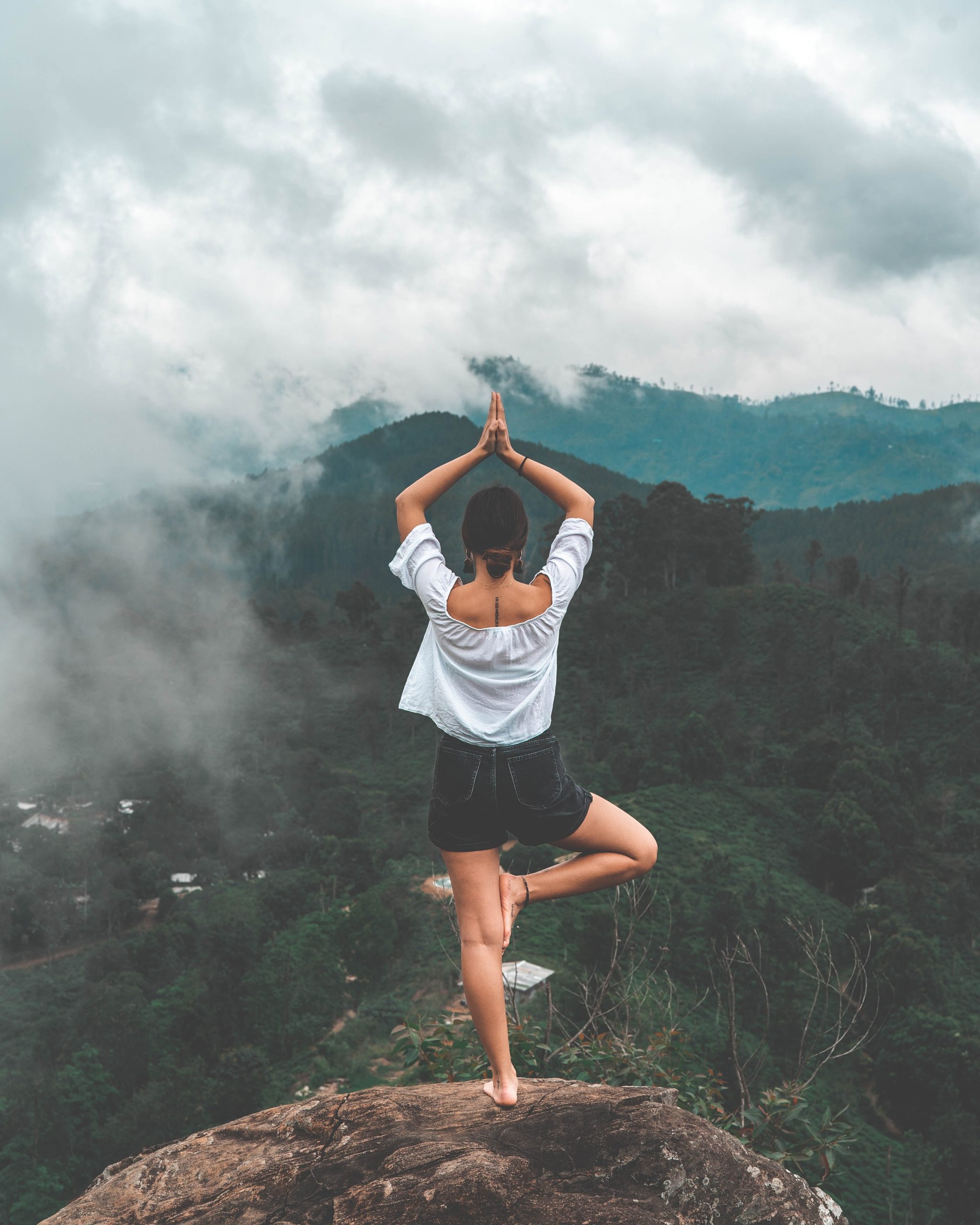EXERCISE
Health Benefits of Walking 30 Minutes a Day

What are the Health Benefits of Walking 30 Minutes a Day?
There are many different health benefits of walking 30 minutes a day. Being physically active can improve longevity, protect you from developing certain cancers, prevent osteoporosis, promote weight loss, improve heart, lung, and muscle fitness, improve sleep quality and relieve anxiety and depression. Walking daily (and just moving more in general) is one of the best things you can do for your body, mind and soul.
Listen to your Heart
According to the American Heart Association, walking can lower the risk of diabetes, high blood pressure and high cholesterol. And even better, it is equally as effective as running. Why exhaust yourself and increase the risk of injury with running, when you can just take a walk for about 30 minutes a day?
Researchers at the Lawrence Berkeley National Laboratory at Berkley analyzed over 30,000 runners and 15,000 walkers over a six year period. What they have found is that the same energy used for moderate walking and vigorous running produced similar results. That is, both runners and walkers had reduced risk of diabetes, high blood pressure and high cholesterol. These three conditions are risk factors for both heart disease and stroke. The researchers specifically found that walking reduced first time hypertension risk by 7.2 percent, coronary heart disease by 9.3 percent and first time diabetes by 12.3 percent.
Health Benefits of Walking vs. Running
Paul Williams, Ph.D, the study’s principal author, noted that walking may actually be a more sustainable activity for some people when compared to running since people are always looking for an excuse not to exercise. Walking gives us a great choice for investment in future health. Russell Pate, Ph.D, is a professor of exercise science at the University of South Carolina. He commented, “the findings are consistent with the American Heart Association’s recommendations for physical activity in adults that we need 30 minutes of physical activity per day.” Increasing walking means means increasing good health.
Walking and Weight Control
The researchers at Harvard’s School of Public Health, say that walking is an ideal exercise for several individuals since it does not require anything special as far as exercise equipment. Walking is also the perfect exercise for those who are extremely out of shape. Even those who need to start slow and go for short distances can build up to 30 minutes over time.
Walking can also be done pretty much anywhere, both inside and outside, and is considered a very safe form of exercise. If safety is a concern then consider indoor walking, such as at the mall or even walking in place while watching TV.
In order to maintain your weight, it is normally necessary to get at least two and a half hours of moderately intense activity a week. The Women’s Health Study followed over 30,000 middle-aged women for 13 years to verify how much physical activity was needed to stay within five pounds of their original weight.
Researchers found that women with a normal weight range at the start of the study needed at least an hour a day of physical activity to stay at a steady weight. The researchers concluded that 30 minutes of walking a day may work to lose weight when combined with healthy eating.
Can Being a Couch Potato Hurt You?
Are you a couch potato? Most people are aware that a sedentary lifestyle has negative consequences for the body that results in obesity and development of different diseases. Roughly 40 percent of Americans report that they do not engage in any physical activity at all.
A recent Nurses’ Health Study followed over 50,000 middle-aged women for six years and surveyed their diet and activity habits. They found that every two hours spent watching television increased the risk of becoming obese by 23 percent and the risk of developing diabetes by 14 percent. Sitting for hours every day changes peoples’ metabolism in ways that promote obesity, heart disease, diabetes, and other chronic conditions.
Health Benefits of Walking Uphill
According to an American Heart Association’s study, walking uphill improves fat and sugar levels in the blood. Normal walking decreases lipid problems and glucose metabolism.  The researchers found that walking uphill improves glucose tolerance (a measure of how well a person is able to process glucose) which is very important for individuals with type 2 diabetes.
The researchers found that walking uphill improves glucose tolerance (a measure of how well a person is able to process glucose) which is very important for individuals with type 2 diabetes.
They also found that the test subjects who walked uphill lowered the level of triglycerides (a type of unhealthy fat) in their blood by 11 percent. These are all excellent health benefits of walking uphill.
Important Reminders
The Mayo Clinic recommends that those who haven’t exercised for some time, and have health concerns, should talk to their health care provider first. If you have any heart, lung or kidney diseases talk to your doctor. Also tell your doctor if you have any pain, dizziness, shortness of breath, ankle swelling or chest pain.
Finally, the American College of Sports Medicine recommends that you see your doctor if you are obese, over 45 (55 for women), have a family history of heart disease, and have high blood pressure or high cholesterol. Also, let your doctor know if you smoke or recently quit smoking and haven’t exercised in over three months.
Walking Tips
Here are a few tips to make walking a more pleasant, satisfying experience. Remember to wear comfortable clothes and get a pair of supportive walking shoes. Begin with short distances, breathe deep and focus on your posture. Walk slowly at first, then increase your pace. Be aware of traffic, stay on sidewalks and be familiar with your surroundings.
Walking with a partner helps with motivation and reduces danger. You should stop immediately if you experience any foot, knee, hip or back pain. Finally, the American Heart Association recommends warming up and stretching for at least 5 minutes before you begin your walk.
Conclusion
Walking 30 minutes a day is one of the easiest and best ways to get exercise, maintain weight, and become physically fit. Besides getting fresh air and getting away from the computer or TV, it offers a chance to relax and unwind. Walking with friends and family is also excellent way to bond. Overall, there are many positive physical, social, and psychological benefits to walking at least 30 minutes most days.
EXERCISE
Benefits of walking backwards

Table of Contents
Discover the benefits of walking backward.
If you got excited when your toddler started walking, wait until he goes backward! Walking backwards may seem like a simple and silly movement, but mastering this action by your little one is truly impressive and offers many developmental benefits.
Here are some reasons why practicing backwards with your child is so valuable.
Benefits of walking backwards
Security
The most important reason to learn to walk backwards is safety in the first place. When your toddler falls forward, he can use his hands to break the fall and push himself back.
Practicing walking backwards allows you to increase your ability to use your legs to prevent a backward fall.
You will slowly learn to counteract a backward fall by taking a few steps back to regain your balance. Protecting your head and spine from these falls is the main reason for this achievement of the movement.
Strengthens leg muscles
If you’ve ever tried walking backwards as a fitness exercise, you may have noticed that it engages other leg muscles than walking forwards.
Walking backwards engages the calf muscles, glutes, and quadriceps, which are very helpful muscles for toddlers on the go! Strengthening these leg muscles can help you achieve other movement milestones like climbing, kicking, and even dancing.
Improves balance and coordination
Any type of exercise that improves a child’s balance and coordination is good, and walking backwards does it! Balance and coordination are the foundation of many physical activities, such as learning to ride a bike or playing catch.
Walking backwards is not only great for your little one’s core muscles and postural control, but it’s also a great workout for their cerebellum, as learning to balance while walking backwards facilitates the growth and development of neurons in the brain.
Also Read: Benefits of walking barefoot
Strengthens spatial awareness
Walking backwards also helps increase your spatial awareness, which is a cognitive skill that tells us our position relative to objects around us.
Exercising your backtracking skills allows you to understand how your body and body parts move around a room without bumping into things.
Develop proprioception
Your child’s proprioceptive sense is his ability to internally determine where his body parts are and how much effort it takes to move them.
This internal sense helps guide your backward movements without the need to look back and prevents you from falling.
Walk Back Achievements
Between 16 and 18 months, you will most likely see your toddler master lateral movements and eventually take a few steps backwards. For a time, he may seem like a clumsy little sailor doing the cha-cha-cha.
But as his muscles develop and his balance strengthens, he will feel more and more confident backing up.
Around 28-30 months, you will notice that his steps become steady and steady, allowing him to move backwards halfway across a room (approximately 10 steps). A great feat for little feet!
Remember that little ones reach these milestones of movement at different times and in different ways.
EXERCISE
Adele’s Doctor Reveals Her Weight Loss Secret … And It’s Not Exercise

Table of Contents
EXERCISE
Health Benefits of Yoga

The ancient healing system and practice of yoga, which literally means ‘to join together’ was developed in India more than 5000 years ago by Vedic priests. Their sacred texts and the teachings of yoga rituals sought to develop awareness between the mind and body through synergy, strength, and harmony. During subsequent millennia, the modern or Western approaches and Health benefits of yoga of the study and practice of yoga has undergone variations but follows traditional methods.
Indeed, science continues to corroborate the health benefits of yoga as demonstrated by research at National Center for Complementary and Integrative Health, American Society of Clinical Oncology, Harvard Medical School, as well as numerous other scholarly, fitness, and health and wellness institutions and facilities such as IDEA Health & Fitness Inc. Today’s practice combines a series of poses, movements, or postures that incorporate proper breathing techniques – the body’s vital energy to find peace and achieve serenity.
Popularity of Yoga
Over the past two decades, the popularity of yoga has experienced incredible growth and for good reason. As the revolution of fitness fads, diets, and gimmicks have increased in order to mitigate the rise of obesity, heart disease, Type II diabetes, and other symptoms of morbidity, the practice of yoga has simultaneously evolved as one of the best ways to increase health and vitality, improve flexibility, athletic and sports performance, maintain or increase cardiovascular fitness, build muscle tone, help with weight loss, boost immunity, improve quality of sleep, and reduce depression. As a mind-body alternative medical advancement with a take charge impact on spirituality, yoga has stood the test of time with more than hundred variations or schools of practice.
Yoga for Depression

According to the World Health Organization (WHO), depression is a major disability on a global scale (NIMH). In addition, the surge of available technology has become one of the dominant avenues that people capitalize upon in order to stay connected with coworkers, friends, and family. The combined sources of social media and networking provide easy access on a daily basis, but the high tech overload leaves a wake of isolation and lack of personal connection. The results may lead to stress, insomnia, anxiety, alienation, and depression. According to IDEA, a professional fitness and wellness association, “Depression is a common mood disorder characterized by feelings of guilt, hopelessness, and worthlessness” (Lipton. 2008).
Recent research and clinical studies through the National Center for Biotechnology Information, the National Institutes of Health, and Harvard Medical School indicate that yoga is a favorable intervention and alternative method to reduce the stress response as well as a viable option to the treatment of depression and insomnia. Typical exercise regimes and programs focus on the physical aspects and attributes of wellness. Although these are critical to longevity, overall health, and vitality, Yoga incorporates the physical component with meditative, proper breathing, relaxation, and self-actualization. Together, the practice of yoga culminates in reducing depression through better mental clarity, less physical pain, increased positive self-esteem, enhanced peace of mind, reduced stress, promotes transformation, and leads to healthier lifestyle choices.
Yoga for Seniors
Yoga is one of the safest workouts for people of all ages with many choices available for every level of fitness, body type, and skill level. Whether you are a beginner or a seasoned practitioner, a yoga workout is low impact and joint friendly. Seniors benefit from yoga because it improves their bone health, which is critical to preventing bone loss, fractures, and osteoporosis. Moreover, Yoga helps with posture, protects the spine, reduces the risk of injury, lowers blood pressure and blood sugar, improves immunity, increases balance, flexibility, range of motion, and strength, enhances blood flow and circulation, prevents damage to soft tissues, is an excellent component to rehabilitation and injury recovery, builds body awareness, improves breathing, and leads to heightened inner strength; all critical factors for healthy aging.
Yoga Class
In order to participate in a yoga class, all that is required is comfortable, breathable clothing as well as a few other props. Most studios provide a mat and also recommend going barefoot. However, some people benefit from props such as cushions, straps, blankets, and yoga blocks. Yoga Blocks raise the level of the floor to accommodate individuals with less flexibility or to allow beginners to reach poses with more ease and comfort. Yoga blocks also assist with balance, alignment, and facilitate holding poses for longer periods of time without the risk of injury, but proper use is essential to a positive Yoga experience. Blocks can be used in seated poses, standing positions, or under the head when lying down on the floor for abdominal or meditative work.
Precautions
There are many health benefits of yoga, and with the variety of classes now available, everyone stands to gain from engaging in the practice. Nevertheless, there are some conditions that warrant precaution and a consultation with a medical practitioner including severe osteoporosis or balance problems, poor conditioning, herniated disks, pregnancy, impaired circulation, and certain eye problems such as glaucoma.
Stay up to date on the latest in health and nutrition by signing up for our free newsletter series.
-

 Benefits4 months ago
Benefits4 months agoThe Benefits of Joining Gym Lumolog – Improve Your Fitness & Health
-

 Food1 year ago
Food1 year ago10 + Benefits of carrot juice and side effects
-

 Health1 year ago
Health1 year ago50 Super Healthy (And Very Often Cheap) Foods
-

 Health1 year ago
Health1 year ago5 Shocking health benefits of kinkeliba and side effects
-

 Food1 year ago
Food1 year ago8 shocking benefits of leek juice and side effects
-

 Health1 year ago
Health1 year agoBenefits of guava leaves Sensually
-

 Health1 year ago
Health1 year ago15 Benefits of lipton tea and side effects
-

 Weight Loss1 year ago
Weight Loss1 year agoChaz Bono weight loss secret
